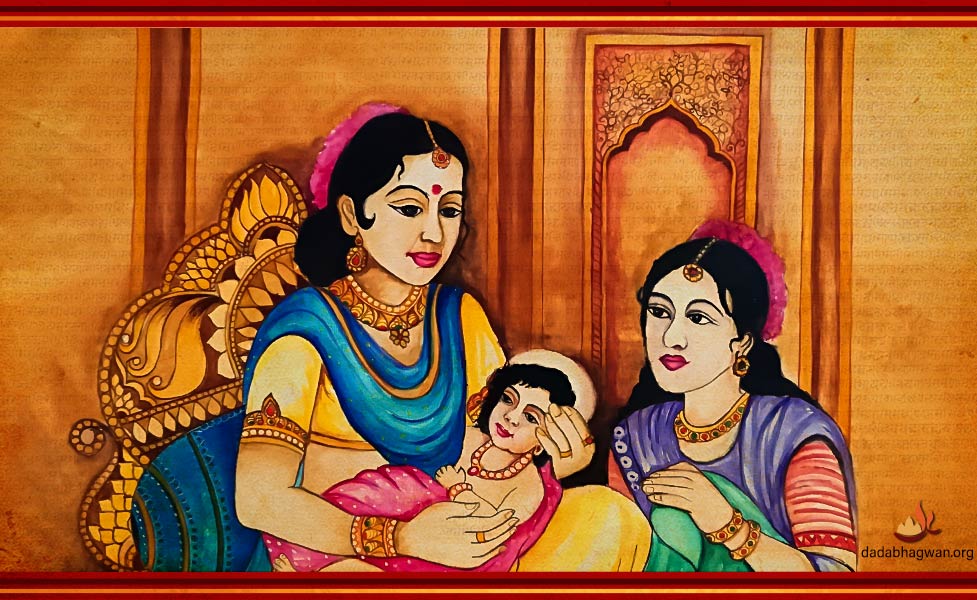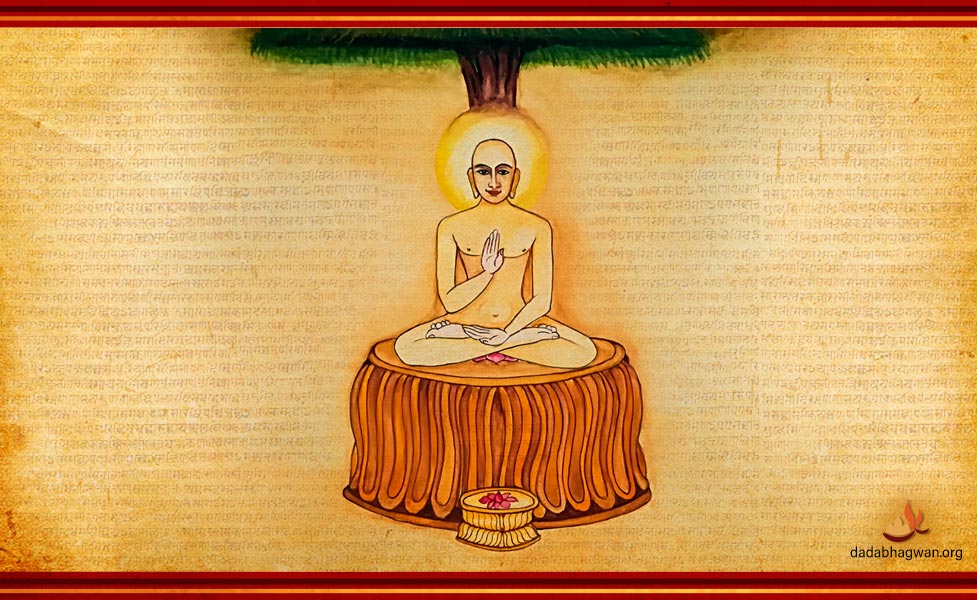SHREE ANANTNATH BHAGWAN: LIFE STORIES OF THE FOURTEENTH TIRTHANKARA
Shree Anantnath Bhagwan was the 14th Tirthankara of the current time cycle. His height was 50 bows. Lord Shree Anantnath’s symbol is the Falcon bird. Paataal Yaksh Dev and Ankusha Yakshini Devi are His Shaasan Dev and Shaasan Devi, respectively. Come, let’s now read about the life story of the Lord and His previous two births.
Shree Anantnath Bhagwan – Past Births
In the Airavat Vijay’s Arishtha Nagri, located in the Ghatki Khand’s Pragvideh Kshetra, there was King Padmarath. After been throned in his worldly life, later, he took Diksha. With great worship and devotion, he bound the Tirthankara gotra and reincarnated in the celestial world.
Shree Anantnath Bhagwan – Birth and Diksha
After completing the lifespan as a celestial being, Lord Tirthankara Shree Anantnath was born to King Sinhsen and Queen Suyasha in the Ayodhya Nagari of Bharat Kshetra. That’s when King Sinhasen won over the infinite power of the enemies, and hence, the Lord was named ‘Anantnath’.

At a young age, He was married and then throned. After a certain period, upon the request of the celestial beings, He took Diksha.
Now, let’s read about King Purushottam —the fourth Vasudev, King Suprabh —the fourth Baldev, and King Madhu— the fourth Prati vasudev, all of whom where there during the time of Shree Anantnath Bhagwan.
Malaybhumi’s King Chandshasan and King Samudradutt were close friends. Once, King Chandshasan from Malaybhumi came to King Samudradutt as a guest. King Samudradutt welcomed him with beautiful hospitality. King Samudradutt and his Queen Nanda stood in the service of King Samudradutt. Since Queen Nanda was extremely beautiful, King Chandshasan fell in love with her and eloped with her. At the other end, King Samudradutt experienced great anguish due to the insult and separation from his wife. He was not capable of taking any action against King Chandshasan; therefore, the insult and anguish within him finally led to dispassion towards the worldly life, and he took Diksha. After Diksha, he took penance and made a firm resolution of taking revenge from Chandshasan in his next birth for sure. From one wife, so much of vengeance arose! Upon completion of life, King Samudradutt became a celestial being .
After wandering for many lives, King Chandshasan came back on this Earth and took birth as the son of King Vilas and Queen Gunvanti, in the form of Madhu, the fourth Prati vasudev.
The birth of the fourth Vasudev also happened during that time, in the Dwarka Nagri, at King Som’s place. King Som had two wives: Sudarshana and Sita. Suprabh, the fourth Baldev, was born to Queen Sudarshana and Purushottam (King Samudradutt), the fourth Vasudev, was born to Queen Sita.
As per the rule, Vasudevs are very powerful, intelligent and have a tremendous ego. Ego like which is not to be seen in the entire world, a Vasudev has such topmost ego; and as a result of which, there is immense power in them. They have the power to shake half of the world.
At a very young age too, Vasudev Purushottam was very strong. Vasudev Purushottam and Baldev Suprabh shared a hearty bond of oneness and togetherness between them. Although they were step brothers, yet their love for each other was superior than that between the real brothers. When Vasudev Purushottam and Baldev Suprabh were of a tender age, the Prati vasudev, Madhu, was the king of half of the Earth.
Once, Naarad Muni went into the royal court of the Prativasudev . King Madhu then was praising himself , “I am the King of half of the Earth. All these kings are in my service; all of them salute me and pay me tremendous extortion money.” Listening to these talks, Naarad Muni said to King Madhu, “You are the king of half of the Earth. You feel that all kings salute you; however, the two sons of King Som, Purushottam and Suprabh, are extraordinarily strong. That which is not to be seen in the entire world, such strength they possess. You are no match to them. They have the power to shake the entire Meru Mountain.”
Listening to the praise of Vasudev’s power, King Madhu was furious as if he was burning in fire. Feelings of vengeance and competition arose inside him. Always, there is a feeling of competition between kings. Thereafter, King Madhu sent his messenger to meet King Som. Being superior, King Madhu demanded extortion money from King Som. He asked King Som to send through his messenger, all extortion money in the form of precious stones, ornaments, chariots of elephants and horses. King Som, as usual, was prepared to send the extortion money. But his two sons, Purushottam and Suprabh, did not agree to this. They said, “No dad! Now, we are here. We’ve grown up now and are capable by all means. We shall wage war, but not give away anything to King Madhu.” They insulted the messenger and sent him back. Listening to the messenger, King Madhu was very angry. “What will these young princes do to harm me?”, saying so, he waged a war against King Som and his two sons. A huge war took place between the soldiers on both ends. Finally, as per the rule, the Prativasudev was killed at the hands of the Vasudev. Prativasudev was beheaded with the chakra. On the other hand, the victorious King Purushottam was coronated as a Vasudev. He ruled the kingdom, and for the sake of power, brought all the kings under his control.
At the end of his life, King Vasudeva Purushottam passed away. After that, Baladeva Suprabha became very dispassioned for worldly life because he had great affection for his brother. While performing much devotion and worship, he left his body and took birth in the celestial life-form.
Shree Anantnath Bhagwan – Keval Gnan and Deshna

For three years, Shree Anantnath Bhagwan travelled from one place to another. Three years after taking Diksha, He attained Keval Gnan (Absolute Knowledge). Upon the Lord attaining Keval Gnan, the celestial beings created a Samovasaran, from where the Lord gave Deshna.
According to Lord’s Deshna, Moksha is in two stages:
- The first stage of Moksha, which we experience here itself while we are alive, is called the state of freedom. Liberation from all sufferings is the first stage of Moksha.
- In the second stage of Moksha, all our karmas, all attachments shed off, get over; all parmanus (particles of inanimate matter which are not in pure form) shed off. One comes in the state of Absolute Soul only. Thereafter, when the shedding of the last Ayushya karma (life-span determining karma) happens, one goes to Moksha. It is the supreme Moksha; all Souls are seated in the Siddha Kshetra.
Upon listening to the Deshna of Lord Anantnath, the heart of people transformed . The words of a Tirthankar are so powerful that they cut through all the inner veils of karma within the listener, and reach right up to their Soul. Listening to that speech, several people have sailed through the worldly ocean of life and death and have attained salvation. That ‘syadvaad vaani’ (speech that does not hurt the ego of any living being in the slightest extent), that Deshna is nowhere to be seen in this world!!!
Shree Anantnath Bhagwan – Nirvana
Shree Anantnath gave Deshna for the rest of His life. He had 50 Ganadhars (chief disciples of a Tirthankara) in His Sangh. Lakhs of people took advantage of the speech of Lord, and upon taking Diksha, progressed on the path of Moksha. Purushottam Vasudev and Suprabh Baladeva also went to Anantnath Bhagwan and attained the right vision by listening to His powerful words. Suprabh Baladeva became a disciple and after clearing all his karmas, attained salvation.
Anantnath Bhagwan, along with thousands of Sadhus, Sadhvis and Kevalis, went to Moksha from the Samet Shikharji Mountain.
subscribe your email for our latest news and events





